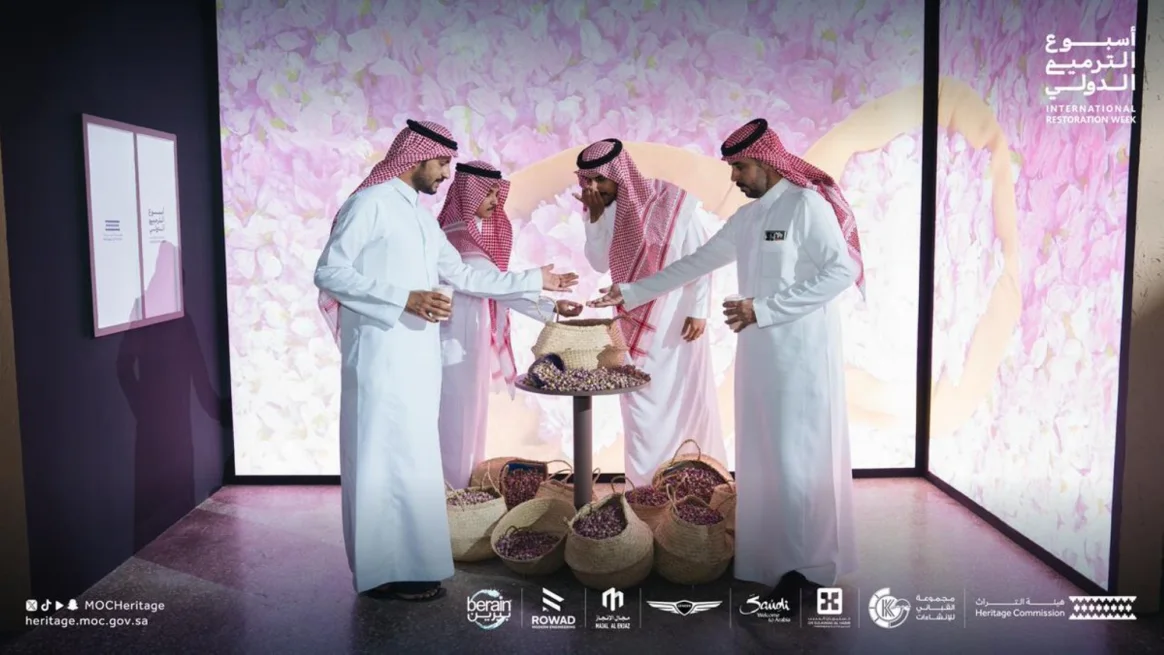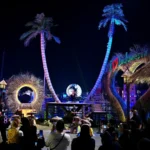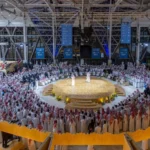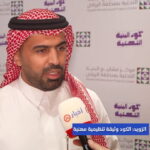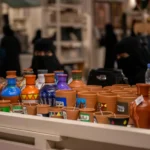With the participation of a select group of heritage specialists and academic institutions
The International Restoration Week events organized by the Heritage Commission at the Ministry of Culture in Jax District, Diriyah, Riyadh continued with the participation of a select group of heritage specialists, academic institutions, and students, along with visitors and interested individuals from within the Kingdom and abroad.
Strengthens AlUla’s role as a global open laboratory for research and discovery
The Royal Commission for AlUla participated in the events to highlight the rich cultural and historical legacy of AlUla Governorate, while showcasing the restoration and preservation projects it implements according to the best international practices. This contributes to raising public awareness about the importance of heritage preservation and strengthens AlUla’s role as a global open laboratory for research, discovery, and heritage conservation.
The Royal Commission for AlUla pavilion includes interactive displays of a group of prominent archaeological sites in AlUla, in addition to highlighting ongoing restoration initiatives and visual and narrative content that reflects its leadership in this field.
AlUla’s presence at this prominent international event confirms the Royal Commission’s commitment to supporting the objectives of Saudi Vision 2030 by making heritage a pillar of sustainable development and enhancing the Kingdom’s position as an influential platform in the field of cultural heritage preservation at regional and global levels.
Royal Commission for AlUla pavilion
The Royal Commission for AlUla pavilion showcases the ongoing cultural and archaeological developments in the ancient region of AlUla, Saudi Arabia. It serves as a modern gateway to introduce the world to the area’s rich heritage, which includes the UNESCO World Heritage Site of Hegra, a 2,000-year-old Nabataean city. The pavilion itself is a contemporary structure designed to promote the Commission’s long-term project to preserve and sustainably develop this historic crossroads of civilizations.
Heritage Commission
The Heritage Commission is a government body responsible for protecting and promoting cultural heritage within a nation. It typically oversees the preservation of historical sites, artifacts, and intangible traditions. Its history is tied to the growing national and global recognition of the importance of safeguarding cultural heritage for future generations.
Ministry of Culture
The Ministry of Culture is a governmental body responsible for preserving, promoting, and managing a nation’s cultural heritage and arts. Its history is tied to the modern era of state-building, with many countries establishing such ministries in the 20th century to formally oversee cultural policy, protect historical sites, and support artistic expression. The specific founding date and focus vary by country, but its core mission is to safeguard national culture for future generations.
Jax District
I am unable to provide a summary for “Jax District” as it is not a widely recognized historical or cultural site. The name could refer to a local neighborhood, a modern development, or a colloquial name for an area in a specific city. For an accurate summary, more specific details about its location would be needed.
Diriyah
Diriyah is a historic city located on the outskirts of Riyadh, Saudi Arabia, and is the original home of the Saudi royal family. It served as the first capital of the First Saudi State, established in 1744, and was a major political and religious center. The city’s iconic mud-brick architecture, particularly in the At-Turaif district, is a UNESCO World Heritage Site, symbolizing the birthplace of the modern Saudi state.
Riyadh
Riyadh is the capital and largest city of Saudi Arabia, serving as the nation’s political and administrative center. Historically a walled oasis town, it was the historic seat of the Al Saud dynasty and became the capital in 1824. Its modern transformation into a global metropolis began after the discovery of oil in the 20th century.
AlUla Governorate
The AlUla Governorate in northwestern Saudi Arabia is a historically significant region renowned for the ancient Nabataean city of Hegra (Mada’in Salih), a UNESCO World Heritage Site. This area served as a major crossroads for ancient trade routes and features well-preserved monumental tombs carved into sandstone outcrops. Today, it is a major cultural and tourism destination, showcasing millennia of human history.
Saudi Vision 2030
Saudi Vision 2030 is a strategic framework launched in 2016 to reduce Saudi Arabia’s dependence on oil, diversify its economy, and develop public service sectors such as health, education, infrastructure, recreation, and tourism. The vision is built upon three main themes: a vibrant society, a thriving economy, and an ambitious nation, with the goal of unlocking new sectors and creating a more sustainable and dynamic future for the country.

